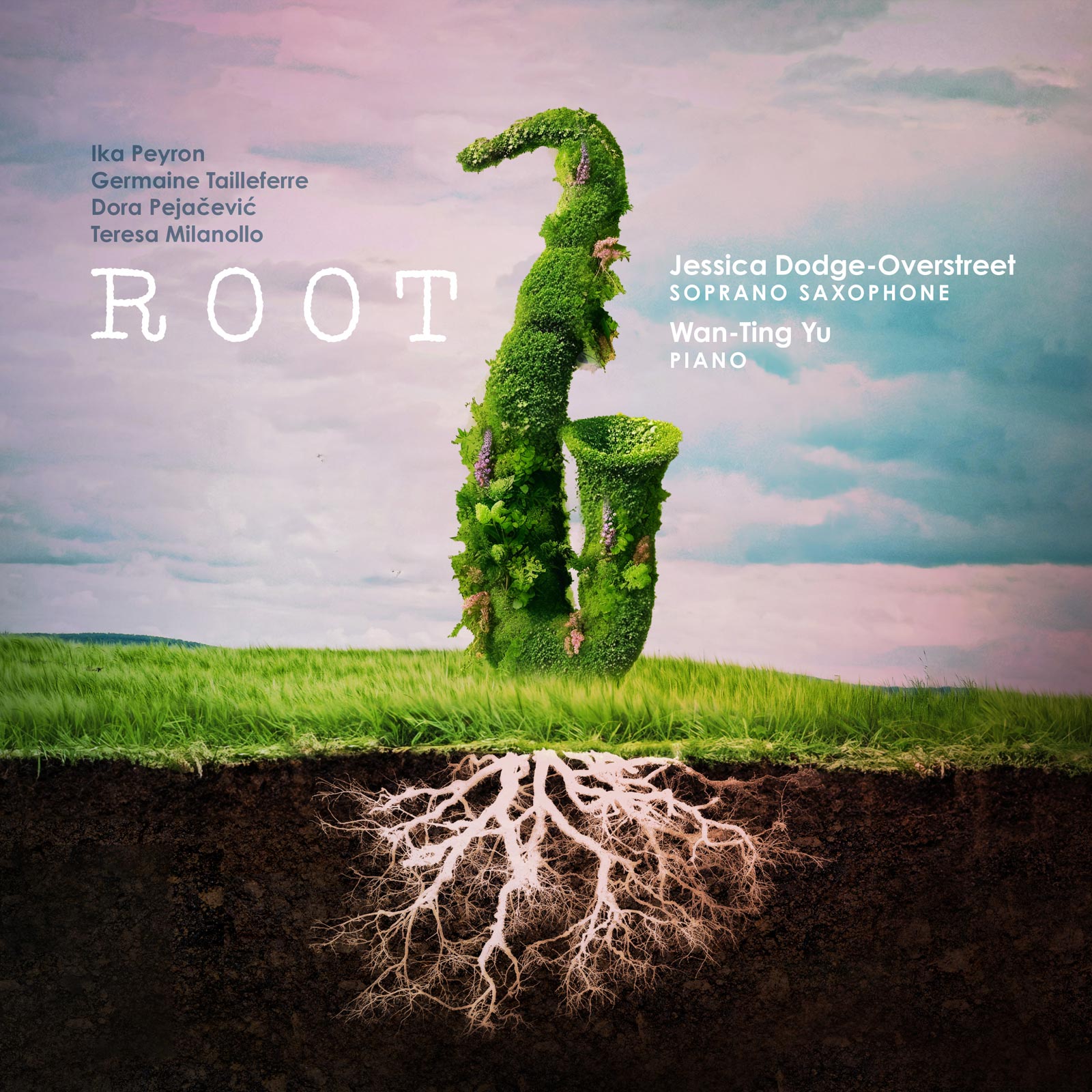Root
Jessica Dodge-Overstreet soprano saxophone
Wan-Ting Yu piano
Ika Peyron composer
Germaine Tailleferre composer
Dora Pejačević composer
Teresa Milanollo composer
On ROOT, classical saxophonist and music theorist Jessica Dodge-Overstreet harnesses the ethereal, almost-vocal timbre of the soprano saxophone. Accompanied only by pianist Wan-Ting Yu, Dodge-Overstreet performs music written by a culturally-diverse cast of female composers including Ika Peyron, Germaine Tailleferre, Dora Pejačević, and Teresa Milanollo. From the technically demanding Sonate Slave, with its stratospheric leaps high into the instrument’s uppermost register, to the playful Variations Humouristiques sur l’air de Marlborough for violin and piano which sets the popular folk tune Bear Went Over the Mountain, Dodge-Overstreet brings this versatile and too-often overlooked instrument into the limelight.
Listen
Stream/Buy
Choose your platform
Track Listing & Credits
| # | Title | Composer | Performer | |
|---|---|---|---|---|
| 01 | Romance and Humoresk Op. 19: I. Romance | Ika Peyron; arr. Jessica Dodge-Overstreet | Jessica Dodge-Overstreet, soprano saxophone; Wan-Ting Yu, piano | 5:30 |
| 02 | Romance and Humoresk Op. 19: II. Humoresk | Ika Peyron; arr. Jessica Dodge-Overstreet | Jessica Dodge-Overstreet, soprano saxophone; Wan-Ting Yu, piano | 4:17 |
| 03 | Sonata No. 1: I. Modéré sans lenteur | Germaine Tailleferre; arr. Jessica Dodge-Overstreet | Jessica Dodge-Overstreet, soprano saxophone; Wan-Ting Yu, piano | 6:38 |
| 04 | Sonata No. 1: II. Scherzo | Germaine Tailleferre; arr. Jessica Dodge-Overstreet | Jessica Dodge-Overstreet, soprano saxophone; Wan-Ting Yu, piano | 3:23 |
| 05 | Sonata No. 1: III. Assez lent – Final | Germaine Tailleferre; arr. Jessica Dodge-Overstreet | Jessica Dodge-Overstreet, soprano saxophone; Wan-Ting Yu, piano | 10:26 |
| 06 | Sonata Slave Op. 43: I. Allegro con anima | Dora Pejačević; arr. Jessica Dodge-Overstreet | Jessica Dodge-Overstreet, soprano saxophone; Wan-Ting Yu, piano | 7:15 |
| 07 | Sonata Slave Op. 43: II. Adagio | Dora Pejačević; arr. Jessica Dodge-Overstreet | Jessica Dodge-Overstreet, soprano saxophone; Wan-Ting Yu, piano | 5:55 |
| 08 | Sonata Slave Op. 43: III. Allegro molto vivace | Dora Pejačević; arr. Jessica Dodge-Overstreet | Jessica Dodge-Overstreet, soprano saxophone; Wan-Ting Yu, piano | 5:32 |
| 09 | Variations Humouristiques sur l’air de Marlborough | Teresa Milanollo; arr. Jessica Dodge-Overstreet | Jessica Dodge-Overstreet, soprano saxophone; Wan-Ting Yu, piano | 8:50 |
Recorded March 16, 18-19, 2023 at Tempest Studios in Tempe AZ
Producer Dr. Robert (Bob) Spring
Engineer Clarke Rigsby
Mastering Melanie Montgomery
Executive Producer Bob Lord
A&R Director Brandon MacNeil
A&R Chris Robinson
VP of Production Jan Košulič
Audio Director Lucas Paquette
VP, Design & Marketing Brett Picknell
Art Director Ryan Harrison
Design Edward A. Fleming
Publicity Aidan Curran
Artist Information

Jessica Dodge-Overstreet
Jessica Dodge-Overstreet is a classical saxophonist and music theorist from Nevada. She has performed as a soloist across the United States as well as internationally in Canada, France, and Russia. Dodge passionately performs both works by living composers and transcriptions of works from before the saxophone was a standard solo voice. She has had a part in commissioning or premiering works by David Biedenbender, Viet Cuong, Mark Ford, Jenni Watson, and many others.
Wan-Ting Yu
Wan-Ting is a Taiwanese-born pianist and double bassist. She served as a member of the double bass section of the Taipei Symphony for five years before deciding to pursue an additional degree in collaborative piano. As both a bassist and a pianist, she has performed across the globe, in Germany, Italy, France, Mexico, Japan, Korea, and many others. She can be heard on renowned bassist Catalin Rotaru’s last three studio albums. She holds a bachelors in piano performance from the National Taiwan Normal University, a masters in double bass from the Taipei National University, and is currently a D.M.A. candidate at Arizona State University.

